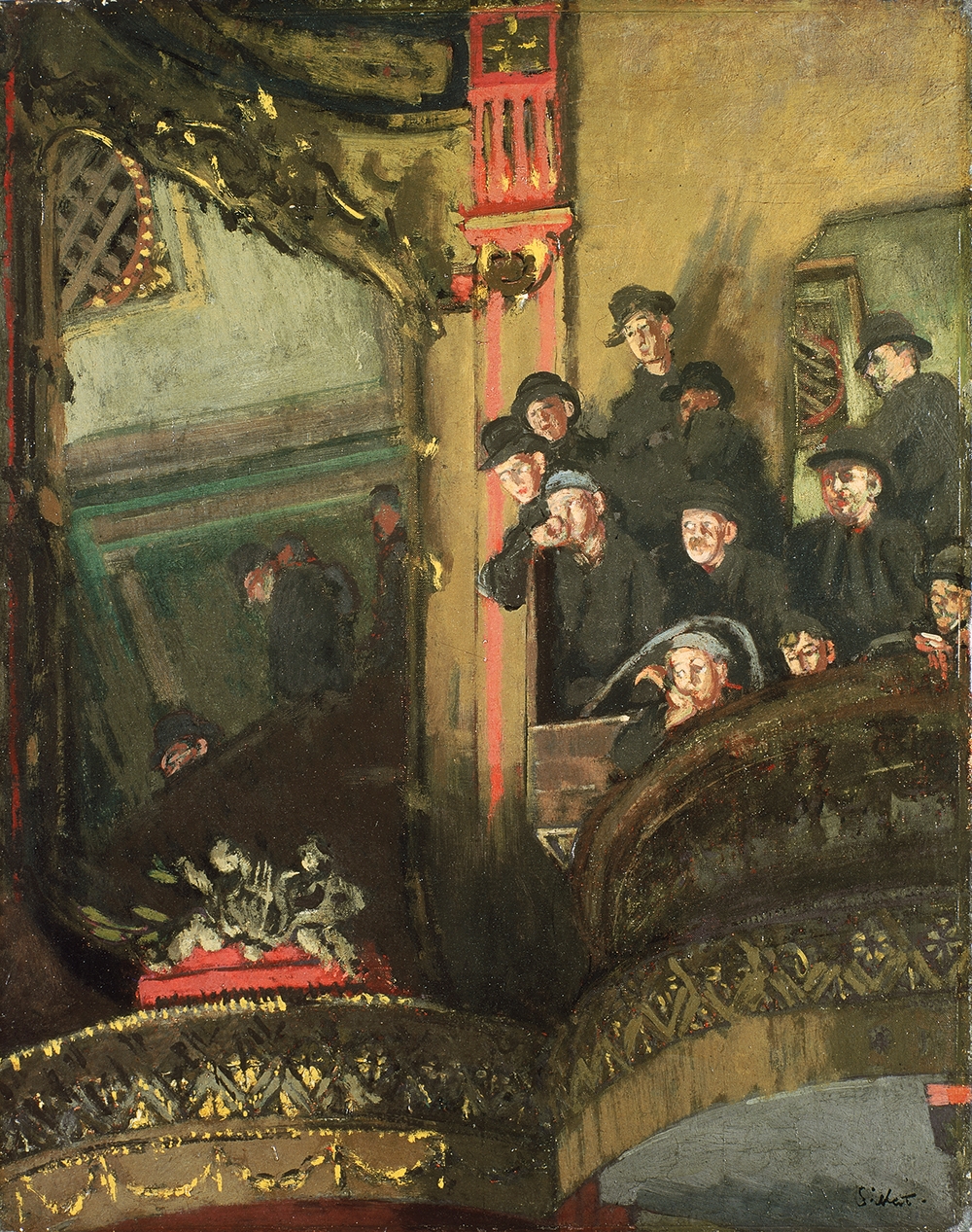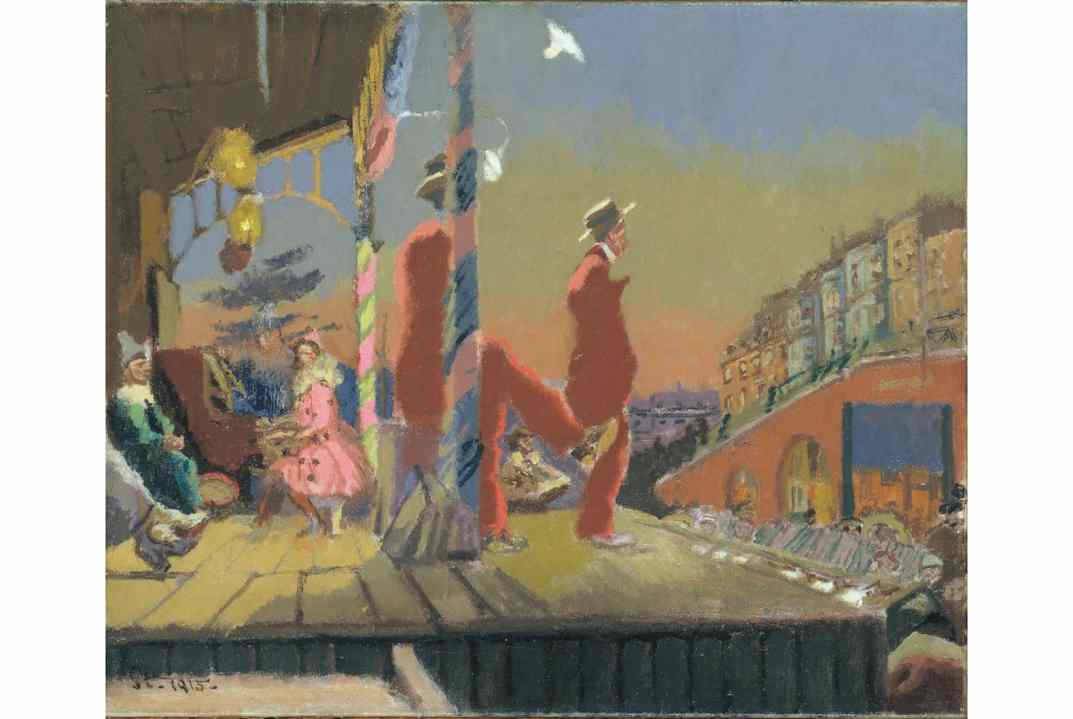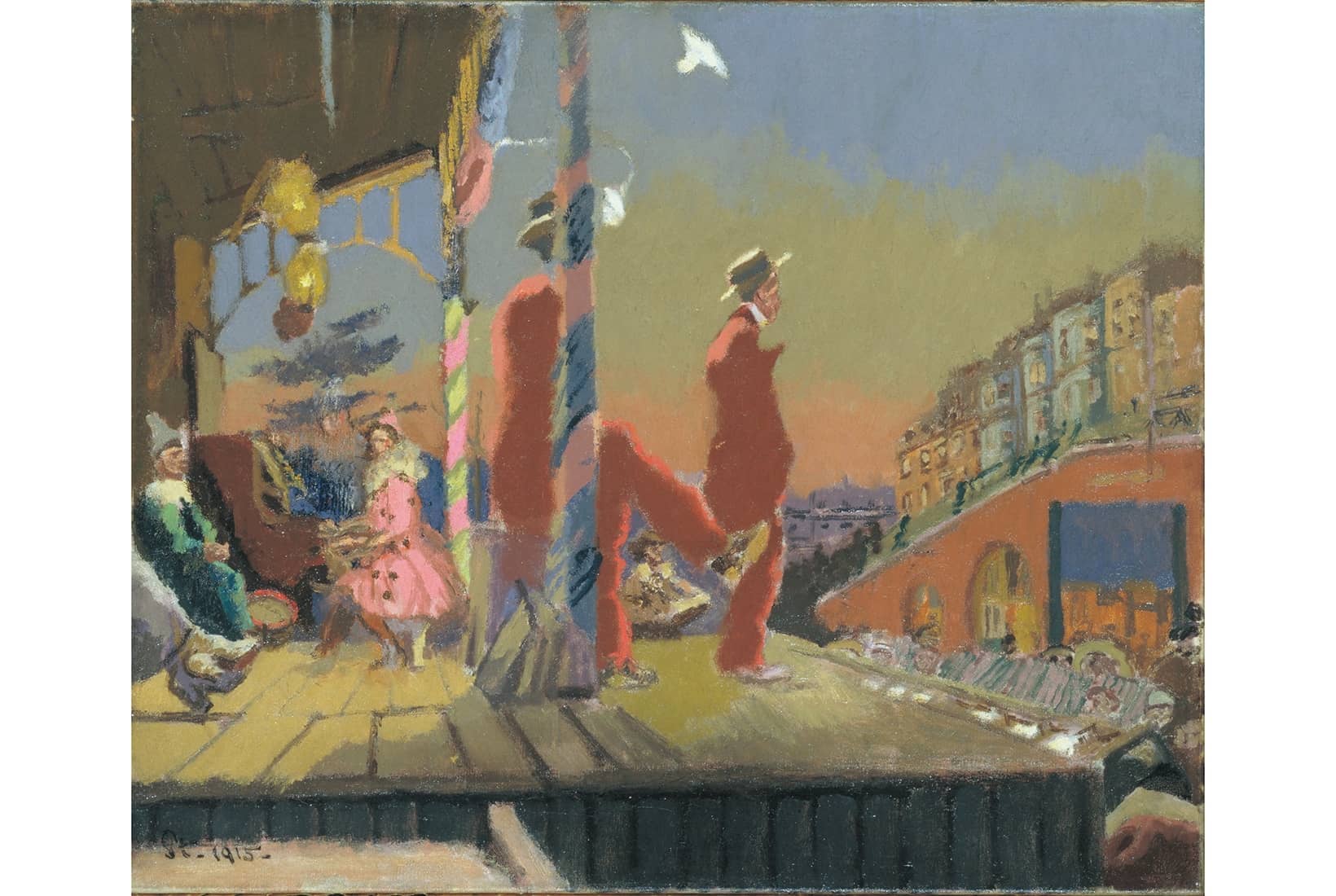‘It’s too dark and life is too short,’ was Walter Sickert’s explanation of his decision to leave London in 1898. Separated from his first wife Ellen Cobden and in financial trouble, he did a flit across the Channel to Dieppe.
A magnet for artists in the summer season, the town had long been a popular subject for tourist views. ‘I see my line…’ he wrote soon after his arrival. ‘Picturesque work. This place Dieppe, is my only up to now, goldmine.’ The place had already had a transformative effect on his painting. It was while spending the summer there with his mentor Whistler in 1885 that he had shifted artistic allegiance to Degas, whom he had first met two years earlier in Paris while delivering Whistler’s portrait of his mother to the Salon. Under Degas’s influence, Sickert ditched the tonal alla prima technique he had learned from Whistler for the Frenchman’s more considered method combining preliminary drawing with strong colour. It brought the sun out on his dingy street scenes, making them saleable to French collectors; his views of Dieppe and Venice, to which he made several trips, won him exhibitions with Durand-Ruel and Bernheim-Jeune in Paris. He would later describe the process of painting these nice little earners as ‘chewing… old cud’. He had by then moved in with the redheaded belle of the fishmarket, Augustine Villain, and her brood of children by different fathers. ‘It is bloody healthy here and fucking cheap,’ he confided to William Rothenstein a couple of years later, adding in brackets: ‘“Fucking” here used as an adverb, not as a substantival gerund.’
In London, Degas’s example opened the door to a subject closer to his heart: the stage. Greasepaint was in Sickert’s blood. His maternal grandmother had danced at the Princess in Shoreditch and he had trod the boards in minor roles for four years before enrolling at the Slade in 1881. His music-hall paintings brought him to public notice in England, and they announce his arrival as an artist in Tate Britain’s new exhibition. The biggest survey of his work for 30 years, with 150 paintings spanning six decades, it’s a long haul. There’s a little too much of the old cud – traipsing past all those tourist views of Dieppe and Venice made me wish I’d taken sandwiches and a flask – but when the curtain goes up on the Old Bedford (see below), it’s showtime.

With Sickert you’re always conscious of a dark side, an undertow of human frailty, an edge of menace
For Sickert, part of the appeal of the music hall was its social promiscuity: it was one of the few places where the classes mixed. As such, it was viewed by respectable citizens as an encouragement to vice; to one contemporary critic, Sickert’s paintings of the subject represented ‘the lowest degradation of which the art of painting is capable’. (Sickert later proved it capable of going lower.) His music-hall paintings are regularly compared with the theatre paintings of Degas, but hanging Degas’s ‘The Ballet Scene from Meyerbeer’s Opera “Robert Le Diable”’ (1876) alongside Sickert’s ‘Bonnet et Claque. Ada Lundberg at the Marylebone Music Hall’ (c.1887) points up the difference. The mood of Sickert’s paintings feels closer to Daumier: the Cockney sparrows in his spotlight look strangely vulnerable and the punters in his shadows verge on grotesque. Degas maintained an emotional detachment from his subjects; with Sickert you’re always conscious of a dark side, an undertow of human frailty. His girl on ‘The Trapeze’ (1920) will never be a high-flyer like Degas’s ‘Miss La La at the Cirque Fernando’, just a member of a two-bit travelling circus performing in a drab khaki tent.
If Sickert’s music-hall paintings made his name, his Camden Town Murder series made him notorious. In Venice in the 1890s he had started painting nudes in interiors using local prostitutes as models, cheerful young girls who laughed and told dirty stories while posing like angels. Back in London in 1905, the life models he began to hire in Camden – ‘my own particular brand of frump’ – didn’t pose like angels, but sprawled across his iron bedstead like slappers. The pictures barely raised eyebrows in France but sparked outrage in England, less because of the abandonment of the poses than the obvious poverty of the surroundings. Virginia Woolf, comparing Sickert’s approach to a novelist’s, observed that he ‘composes his picture down to the very castors on the chairs and the fire irons in the grate’. She didn’t mention the potty under the bed in ‘La Hollandaise’ (c.1906).
The two-handers he began to stage in 1908, starring his studio assistant Hubby and his charlady Marie Hayes, gave further scope to his novelistic talent. There are shades of Vuillard in these airless interiors with their closeted couples trapped in relationships that have long since slumped into indifference. I didn’t feel the ‘palpable sexual tension’ described in the Tate’s caption to ‘Jack Ashore’ (1912-13), only apathy. Nor did ‘Off to the Pub’ (1911) suggest ‘the aftermath of a domestic row’, just normal relations between the sexes. But there is always an edge of menace. The lifestyle of London’s sex workers astonished Sickert: ‘Extraordinary lives. Men, who live on them, now & again hitting them with ’ammers, putting poisonous powders on cakes, trying to cut their throats, drugging their whisky &c’. Yet in his painted confrontations between clothed men and naked women, the power dynamic seems to favour the women. They look completely comfortable in their skins; it’s the men who look crumpled and postcoitally dysphoric.
Sickert’s fascination with how the other half lived was sympathetic rather than lurid. He had a genuine interest in improving working-class opportunities, lecturing on art at Bow and Bromley Evening Institute, where the shop girls giggled at his red socks. So why the unhealthy interest in murdered sex workers? Within months of the murder of Camden prostitute Emily Dimmock in 1907, he renamed his paintings of clothed men and naked women the Camden Town Murder series. You could put that down to an instinct for publicity, but his continuing interest in the Whitechapel Murders of 20 years earlier starts to look worrying in the light of paper historian Peter Bower’s recent discovery that three of his letters written in 1890 are on the same paper as two signed by Jack the Ripper in 1888. The only possible not-so-innocent explanation is that the 28-year-old artist, ever the provocateur, liked the idea of winding the Peelers up.
In old age, Sickert’s fascination with popular culture found a new outlet. In the late 1920s he began to paint pictures based on news photographs: his images got bigger, flatter and lighter, their colours bleached like magazines left in the sun. Not satisfied with becoming an old ham, the septuagenarian artist reinvented himself. Canvases previously clogged with paint start to breathe and take on a dreamlike clarity: a life-sized ‘HM Edward VIII’ (1936), blown up from a black and white news photo, acquires a stark psychological truth, betraying the terror of the man who would not be king. Never a confident draughtsman – his training at the Slade lasted less than a year – it suited Sickert to work from photographs, just as it suits many contemporary painters who haven’t been through the academic drawing mill.
There are no ‘great paintings’ in this exhibition, but ‘great painters’ are not always the most influential. Sickert’s legacy is everywhere in modern British art. Lucian Freud’s ‘Naked Portrait’ (1972-3) hangs in the show as the rightful heir of his splayed nudes, and Francis Bacon’s hunks of human meat are clear descendants of his fleshy frumps. ‘All the greater draughtsmen tell a story,’ he wrote in 1912, arguing that when people criticise a picture it’s because ‘the story is a poor one, poor in structure or poor as drama, poor as psychology’. In figurative art it’s the way you tell them, and Sickert knew how.
Walter Sickert is at Tate Britain until 18 September.







Comments